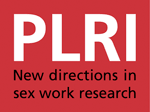journal article
An article in Rethinking Social Epidemiology 2012, Part 3, 205-230. The transmission of HIV is shaped by individual-environment interactions. Social epidemiologic approaches thus seek to capture the dynamic and reciprocal relationships of individual-environment interactions in the production and reduction of risk. Article in the Lancet, Early Online Publication, 11 October 2011. Background The aim of Avahan, the India AIDS Initiative, was to reduce HIV transmission in the general population through large-scale prevention interventions focused on high-risk groups. It was launched in 2003 in six states with a total population of 300 million and a high HIV burden. We assessed the population-level

